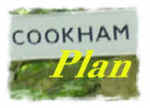
The Cookham Plan
Findings and Recommendations
Housing and Development Group
4. BUILDING QUALITY
| MAIN REPORT INDEX | HOUSING AND DEVELOPMENT INDEX |
4 BUILDING QUALITY
4.1 Remit
Consider the quality of development and how to identify and encourage good design, the right mix of housing types and sustainable development.
4.2 How to define Building Quality?
In addressing this issue, the Working Group was faced with a problem: how to adjudicate on building quality when so many aspects are a matter of personal taste? During consultation, there were several instances of recent developments being cited as being good to some people and bad to others.
Perhaps the most extreme example was the development on the old Dean Farm garage site at Cookham Dean Bottom which was mentioned by many people as model for the sort of good quality development that they would like to see more of despite having been opposed and delayed by the planning system.
To attempt to provide guidance on this matter, we have considered different aspects of overall quality.
4.3 Building Control
Most developments require building control approval to confirm that they will be constructed to appropriate standards of insulation, strength, safety, access etc and certain developments also need to meet additional licensing requirements e.g. for alcohol sales, entertainment etc.
4.4 Quality of Construction
Almost all construction work is subject to Building Regulations and is inspected and approved by RBWM’s building control officers. The regulations set minimum standards for matters such as foundations, strength of structures, insulation and resistance to fire. This ensures that good minimum standards are set for new buildings and significant alterations.
Older buildings (and there are many in Cookham) were not constructed to modern standards. Whilst this is not a concern for most of the matters covered by the regulations, it is likely that many older properties are poorly insulated by modern standards. We consider this issue in more detail below.
4.5 Design Quality and the Appearance of Buildings
A large part of Cookham’s character (certainly in Cookham Dean and Cookham Village) is derived from the buildings in the Conservation Areas. It is very important to the local community that these historical buildings are not lost or
destroyed and that any new ones (in any part of Cookham) add to, and fit in with the surrounding environment. To try to ensure that development is appropriate, the draft Core Strategy (see section 3.5) includes Policy CS 13 - Achieving Quality Buildings and Spaces. This is intended to ensure that all development is of high quality in design and states that development should:
-
Have a site coverage, layout and access, scale, mass, bulk, height, density,
Be visually attractive from all angles through good architecture and the use
Be durable and adaptable;
Respect the established pattern of development and landscape character in
Protect, and where appropriate enhance, existing tree cover and other
Provide open spaces and ancillary facilities appropriate to the function of the
Provide high quality environments for future users, whilst not adversely
Incorporate appropriate crime prevention measures that are in keeping with
Incorporate the highest practical levels of sustainable design and
If approved and strictly enforced, it is to be hoped that this policy will provide a strong lead in ensuring that future developments in Cookham are of an appropriate quality. It is encouraging that the draft policy guidance states that:
‘The Council will refuse design which is inappropriate in its context, or which fails to take opportunities available for improving the character and quality of an area and the way it functions’.
4.6 Energy Efficiency
It is now widely acknowledged that global warming is happening and that significant reductions in carbon emissions are required to mitigate its effects.
This is an area where energy efficiency in buildings has an important role to play and where there is significant scope to improve the quality of insulation and efficiency in both new and existing structures.
A report prepared for Parliament (4.1) estimated that household energy consumption represented more than 25% of the UK’s total energy usage with over a third of that energy being wasted. Much of this is due to inefficient use of lighting and other electrical equipment but insulation is also a very significant factor.
According to British Gas estimates( 4.2), average domestic carbon dioxide emissions in the South East are 5.8 tonnes per annum (tpa). There is considerable variation within this total and household sizes are likely to play a role. Areas similar in nature and prosperity to Cookham show higher emissions
– for example:
Chilterns 7.4t pa
Oxfordshire 7.4t pa
Reading 6.1t pa
Average 7.0t pa
If we assume that Cookham’s dwellings emit an average of 7t pa, this equates to a total of 16,576 tonnes per annum across Cookham’s 2,368 dwellings. Applying the government’s estimate of efficiency to this suggests that approximately 5,500 tonnes per annum is being wasted.
The parliamentary paper suggested that, whist upgrading domestic insulation to the highest standards may not be cost efficient at current energy prices, it could save approximately 35% of emissions.
Cookham has a good history of embracing ‘green’ initiatives and a village wide project to identify energy inefficiency and to improve household insulation and reduce other energy waste could stimulate significant savings (especially if
combined with initiatives to reduce car use). Such an approach should be supported by Core Strategy policy CS11 (Renewable Energy)
4.7 Key Findings
-
Quality of construction is adequately covered by existing Building Regulations.
-
The quality of design and the appearance of buildings in Cookham plays a very important part in defining the character and special qualities of the village. It is to be hoped that the new LDF will strengthen controls over future developments.
-
There appears to be considerable scope to improve the quality of buildings in terms of energy efficiency. *A coordinated village wide initiative to measure energy use and to promote efficiencies could provide a strong local contribution to combating climate change.
4.8 Action Plan
click on chart to view